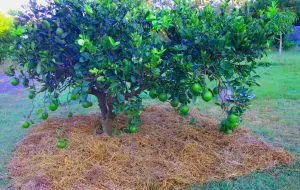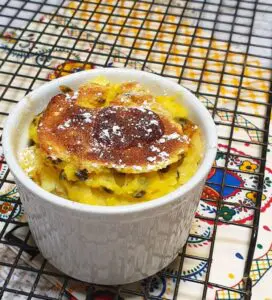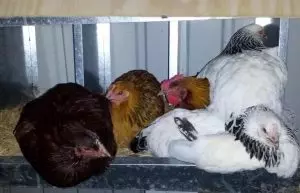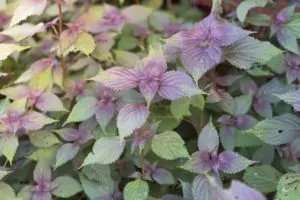Chickens drink a surprising amount of water and this is because they are almost always active though the daylight hours. Therefore, it’s vitally important that chickens are given access to a drinking source whenever they need. If a chicken does not have access to water (for whatever reason) they can quickly become dehydrated making them go “off the lay” or worse die – and this can happen fast in hot weather.
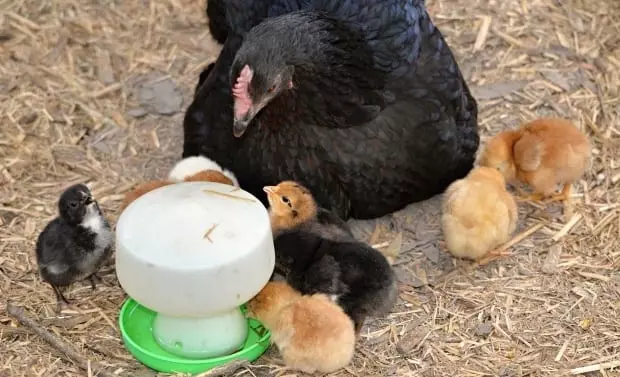
Mother hen watches over her chicks drinking from a mini bell drinker (above image)
Chicken keeping newbies often imagine providing water for their chickens is as simple as buying a chicken drinker from the local pet store, or even utilising a secondhand container as you would for a dog or cat.
Unfortunately, it’s not always this easy to choose the right drinker for your chickens and just as importantly the owner of the flock. As some people inevitably find out, even just one chicken (let alone more) can make a fair mess out of a water container if it’s not used correctly. Also, if the right type of container/drinker is not chosen it can turn into a real unnecessary liability for some chicken owners to constantly be cleaning and refilling the drinker. Fortunately, there are several better types of chicken drinkers on the market that make providing water for poultry easy and less mess.
Simple rules for chicken drinkers
A chicken waterer can be easily emptied by accident if not correctly positioned or have dirt and debris raked in it making it impossible for the chickens to get a drink. Drinkers can fail, become clogged, leak, and/or be contaminated by other animals etc.
Follow these simple rules for chicken drinkers:
-
Use proper chicken/poultry drinkers – yes, a bowl or bucket of water will work but it’s not ideal and should not be used as a permanent option.
-
Ensure the drinker is positioned so it can not be tipped over or dirtied by poop or scratched dirt. This can easily be done by either hanging the container at about the height of the back of a chicken or placing the container up
 on a stand (like bricks etc).
on a stand (like bricks etc). -
Try to keep 1 litre of water minimum per bird per day.
-
Have a backup container (a second one in a different location) just incase there is a problem with the other one. This also helps timid hens have a different drinker option if they are getting bullied by other hens.
-
Keep the containers in a cool shady place as this not only makes the water cool to drink but it also helps prevent the formation of algae and moss in or on the container. If the container is in a position where it does get some sunlight then covering the top (if possible) is a good idea or use a dark container (not see through).
-
If using a gravity fed drinker (like cups or nipples) don't make the water container too large or hook up to mains otherwise leaks will occur. A good sized container for gravity fed drinkers is under 30 litres (8 gal) and if using mains then ensure a good pressure reducer is installed!
Types of drinkers
There are many different types of chicken drinkers available, however, the three most common ones are:
1. Bucket, container, or trough – Open containers are fine to use for chickens and they will drink out of them easy enough. Nevertheless, these types of drinkers can have a tendency to be difficult to maintain and keep clean. The container/bucket needs to allow for the hens to reach in to drink so you can imagine a high sided bucket becoming harder to drink out of as the water goes down.
Therefore, it should be shallow enough to negate this issue but then the chickens will mess in it. A shallow trough placed above back height will work nicely as long as it is auto fill otherwise it can become a nuisance to keep filling up.

Large open bucket/containers like the one above are great for ducks. Chickens will use buckets to drink out of, but it's better if separate chicken drinkers are provided.
2. Self-contained water dispensers (standard) – Basically, these drinkers tend to be the most common type used by backyard poultry keepers. They are: manually filled; hold anything from 500 mils to 10 litres (sometimes more); and gravity fed.
Standard drinkers have a shallow lip around the base of the container making it easy for the bird to get a drink and because the top of the container is closed it can be hung up to prevent poop and dirt contamination. Good for small flocks of birds (one – four).
Be aware plastic drinkers will become brittle and have a short life if exposed to regular sunlight.
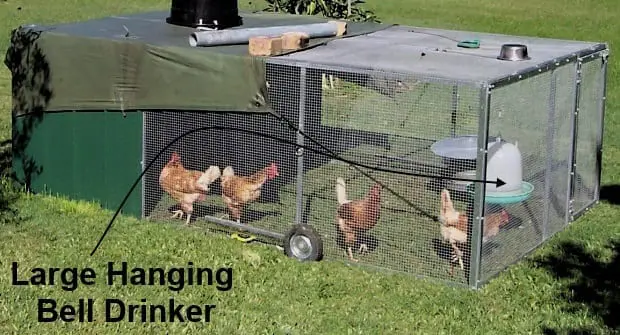
Bell drinkers are an effective and cheap option for small flocks of chickens (image above).
3. Automatic waterers/drinkers – There are several different types of auto-drinkers but really only two categories; those with a self-contained water source (like a drum) or those that are fed by a main water source (like a hose from a mains).
Personally, unless you run a commercial operation, I would not consider hooking your chicken drinkers up to a mains water supply or even a large tank. Why? Because it’s simply an overkill and could lead to more trouble than it’s worth due to extra installation issues and costs like pressure reducers, pipe blow-outs, and leaks.I keep anything from 20-30 large birds at a time and I have found a 20 litre drum (or container with lid) to be the perfect size.
My local butcher sells his used food grade drums (used in the image below) for $5 each and they come with a bung in the bottom perfect to attach an outlet to the drinkers. But if you can’t procure a drum from a business in your area, then you’ll find water drums for a reasonable price at your local hardware, camping store, eBay, or Amazon online shops.

In the image above I have set-up my drum drinker on an old milk crate. The cups are extremely reliable/durable giving the chickens a constant fresh flow of clean water. The pvc attachment is purchased ready made (got mine off eBay) or you can DIY.
Cup or nipple drinkers are primarily used with auto-drinkers and it’s important to use good quality parts European lube cups are very good but can be costly. Cheap poultry cups or nipples are a total waste of time and effort so fork out the money for some good ones. That doesn't mean all Chinese made drinkers are rubbish because some are very good but buy them from a seller who knows their product and has good quality control. This normally means paying a little extra for the quality cups or nipples (wherever they are made) there's a good selection of cup and nipple poultry drinkers on eBay Australia and eBay USA.

The image (above) shows the quail tapping and pushing on the nipple to produce a small flow of water for drinking.
It’s also very important to know most cup and nipple drinkers have a pressure threshold, which means if you do have them connected to a hose from a mains or a large container like a water tank, a pressure reducer MUST be installed otherwise the drinkers will leak.
Cup and nipple drinkers are definitely my favourite chicken drinkers because they rarely get dirty, are easy to install, require little maintenance, last for  years, waste little water, and are easy for chickens to use. In case you are wondering, chickens and other poultry (like quail) easily adapt and learn how to drink from cups and nipple drinkers. Nipple drinkers are fantastic to use for quail flocks.
years, waste little water, and are easy for chickens to use. In case you are wondering, chickens and other poultry (like quail) easily adapt and learn how to drink from cups and nipple drinkers. Nipple drinkers are fantastic to use for quail flocks.
You can buy the cups and nipple drinkers separate and then DIY using standard materials from any hardware store. Or, these days you can buy ready made cup and nipple drinker sets either already attached to a container or able to be attached to your own container/s.
The nipple drinker (left) concept can also be used for chickens or chicks. If anyone would like more information or step-by-step instructions on how to make the drinker ie attach the nipples to the pipe etc, then let me know and I'll detail it in our forum.
Mixed poultry drinkers
Drinkers for one type of bird is fine but it can become a little tricky when you have different species of poultry mixed together like chickens with ducks for example, which is generally a commercial “no no” but often a realistic backyarder or small holdings situation.
The reason different poultry species often have varying drinker needs is simple, they are built differently such as size and beaks so this needs to be considered. And, some poultry (ducks specifically) use water as an aid to clean and eat, so therefore, even the use of water is different.
If you do have mixed poultry or are considering doing so, then it’s important to keep the above points in mind and ensure you cater for all species. This means, if there is no major water structure or course available, like a dam, pond, or stream, then providing a large bucket (at least) is essential for keeping aquatic poultry, like ducks. Ducks will use the bucket to clean their beaks, blow out their nostrils, and wash down food for eating.
Ducks will use chicken drinkers but this causes several problems; for instance, chicken drinkers won’t enable the ducks to dunk their heads and properly clean their beaks, and ducks will quickly dirty the chicken drinker turning the water to mud and sand making it unhealthy for the chickens.
When ducks and chickens are mixed the easiest way to keep the ducks from drinking out of the chickens drinkers is by providing a better option for the ducks like a nice big bucket so they don’t bother with the chicken drinkers; and also, to place the chicken drinkers up higher where the, often more clumsy, ducks can’t get.
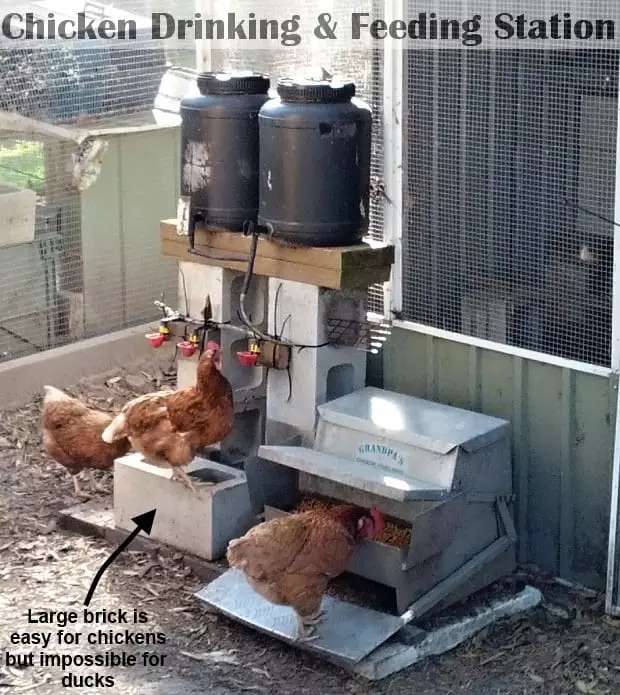
The drinker set-up (above) is essentially "duck proofed" to keep it exclusively for my chickens. Ducks will muck up the cups with their bills clogging up the drinker and making the water dirty. To overcome this, place the cups up high (at least half metre) and allow a large brick for the chickens to hop up on to get a drink. The heavy ducks with their short fat little legs can't jump up and won't attempt to drink from the cups.
Conclusion
I hope you were able to get something out of this post, particularly, if you are considering getting chickens and are just investigating the equipment you’ll need for keeping them. If you do have further questions join our forum and we can chat about anything for as much as you like. You can also leave a short comment after this article if you wish.
At the end of the day, chicken/poultry drinkers are a vital piece of equipment for keeping chickens and the right drinker for the chickens and the owner will make the endeavour all the more fun. The right drinker in the right position used correctly means more time spent enjoying your birds rather than cleaning equipment and refilling containers.
I recommend buying a drinker to suit your needs from eBay here.
Mark Valencia Editor SSM
Look, and see the Earth through her eyes…
You may also be interested in reading: Types of chicken feeders for backyard hens and other poultry.


